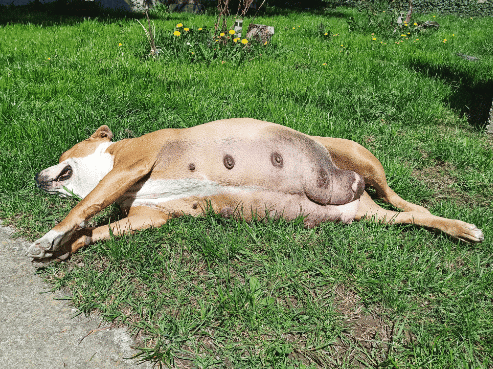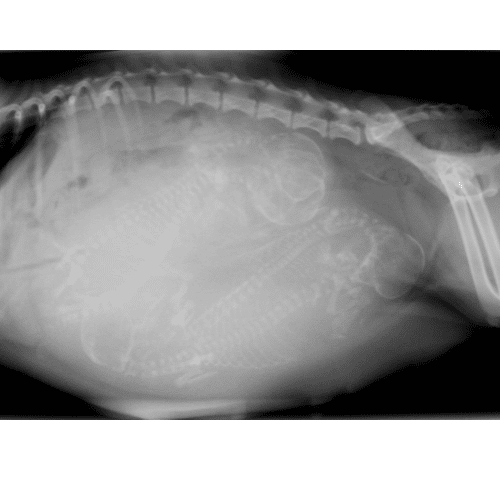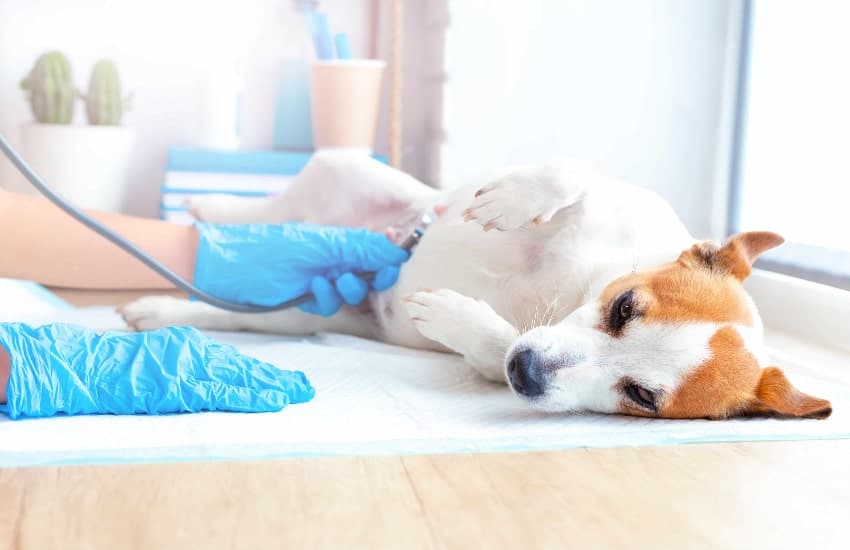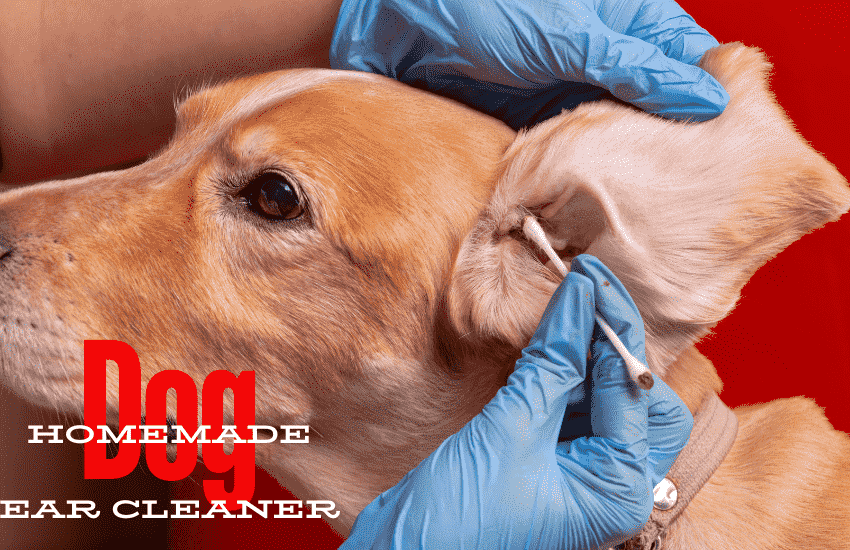Pregnancy can be a time of significant change for both humans and their furry friends. Many behaviours, such as eating habits, may change due to the added stress of carrying a baby, which may seem like a bother to some owners. These changes are natural and signify that the dog is preparing for the arrival of her pup. Keep an eye out for these signs, and don’t be surprised if your pup starts to show sooner than you think!
How Long Does a Dog Stay Pregnant?
That’s a question many pet owners are curious about and one that has confused veterinarians for years. New research from Purdue University sheds some light on the topic, finding that dogs typically give birth within four to six weeks of becoming sexually active. While this time frame may change depending on the breed and size of the dog, it’s generally accurate.
How to tell if your dog is Pregnant Without a Checkup.
Pregnancy in dogs, often referred to as “whelping,” is a remarkable and exciting time for both pet owners and their furry companions. One common question during this period is, “When does a pregnant dog start to show?” Understanding the signs of pregnancy in dogs is essential for providing proper care and preparing for the arrival of the puppies.
The Early Stages of Pregnancy
During the early stages of pregnancy, which typically lasts about three weeks, it can be challenging to note any visible changes in a dog’s appearance. However, some subtle signs may provide hints:
- Behavioral Changes: One of the earliest indicators of pregnancy in dogs is a shift in behaviour. Your dog may become more affectionate, lazy, or experience mood swings. She may also exhibit nesting behaviour, where she starts to gather bedding or create a comfortable space.
- Appetite Changes: Some pregnant dogs may experience changes in appetite. They might eat more than usual or, conversely, lose interest in food temporarily. It’s essential to monitor their nutritional needs during this time.
- Enlarged Nipples: Around the third week of pregnancy, you may notice that your dog’s nipples become slightly larger and darker in colour. This change is a result of hormonal shifts in preparation for nursing.

The Mid-Stages of Pregnancy.
As the pregnancy progresses into the middle stage, which usually spans from the fourth to the sixth week, you can expect more noticeable changes in your dog’s appearance:
- Abdominal Enlargement: The most prominent sign that a pregnant dog is “showing” is increased abdominal size. The abdomen will gradually enlarge as the puppies grow, and this change becomes more apparent as time goes on.
- Weight Gain: Along with the abdominal enlargement, your dog may gain weight during this period. Weight gain can vary depending on the size of the litter and the breed of the dog.
- Increased Appetite: Many dogs experience an increased appetite during this stage, particularly in the second half of pregnancy. Providing a well-balanced diet to meet her nutritional needs is crucial.
The Late Stages of Pregnancy.
In the final weeks leading up to labour and delivery, which typically occur around the eighth week of pregnancy, the signs of pregnancy in a dog become even more evident:
- Swelling and Milk Production: The mammary glands will become increasingly swollen, and some dogs may even start producing milk. This is a sign that the body is preparing to nurse the puppies.
- Visible Movement: In some cases, you may see the puppies moving in the abdomen during the last weeks of pregnancy. This can be a fascinating experience for dog owners.
- Restlessness and Nesting Behavior: As labour approaches, your dog may become restless, pace around, and intensify her nesting behaviour as she prepares to give birth.
Seeking Veterinary Guidance.
While these signs can provide a general idea of when a pregnant dog starts to show, it’s essential to consult with your veterinarian throughout the pregnancy. Regular checkups can help monitor the health of both the mother and the developing puppies, and your vet can guide you in nutrition, exercise, and any potential complications.
Suppose you suspect that your dog is pregnant or you want to confirm a pregnancy. In that case, it’s best to consult with a veterinarian. Vets can perform various diagnostic tests, including blood tests and ultrasound, to accurately determine if your dog is pregnant and provide appropriate guidance for prenatal care and nutrition. Veterinarians have the expertise and tools to ensure the health and well-being of your pregnant dog and her future puppies.
How Do Veterinarians Determine if a Dog Is Pregnant? Understanding Pregnancy Tests for Canines.
Veterinarians play a crucial role in confirming canine pregnancies and ensuring the health and well-being of both the mother and her future pups. Here are the various tests veterinarians employ to determine if a dog is pregnant.
-
Physical Examination:
The first step in confirming a dog’s pregnancy is often a physical examination by a veterinarian. During this examination, the vet may:
- Palpate the abdomen: Feeling for any noticeable changes in the dog’s uterus size or shape.
- Observe changes in the mammary glands: Swelling and darkening of the nipples can be early indicators.
- Check for behavioural changes, including appetite, energy levels, and nesting behaviour.
While these physical signs can provide valuable insights, they are not conclusive evidence of pregnancy, so further testing is typically required.
-
Ultrasound:
Ultrasound is a standard diagnostic tool veterinarians use to confirm pregnancy in dogs. This procedure uses high-frequency sound waves to create images of the dog’s internal organs. By placing an ultrasound probe on the dog’s abdomen, the vet can visualize the developing puppies within the uterus. Ultrasound is a safe and reliable method used as early as 25-30 days.
-
Blood Tests:
Blood tests can be used to detect specific hormonal changes associated with pregnancy. The most commonly used blood test for this purpose measures a hormone called Relaxin, produced by the developing placenta. Relaxin levels begin to rise around 21-25 days after conception and can provide a reliable indicator of pregnancy. This test is beneficial when the veterinarian wants to confirm pregnancy before it’s visible on ultrasound.
-
Radiography (X-rays):
Radiography is typically employed later in the pregnancy, usually around day 45. X-rays can reveal the presence of fetal skeletons, which become visible when the puppies’ bones calcify. This method helps estimate the number of puppies and ensure they are appropriately positioned in the womb. It’s essential to use caution with radiography due to the potential risks of radiation exposure to developing fetuses.

-
Hormone Testing:
In some cases, veterinarians may use hormone tests to detect changes in progesterone and estradiol levels, which can indicate pregnancy. These tests can be performed through blood or urine samples and are most effective when combined with other diagnostic methods.
Can I use a human pregnancy test on my dog?
Using a human pregnancy test on your dog is not recommended and is unlikely to provide accurate results. Human pregnancy tests are specifically designed to detect human chorionic gonadotropin (hCG), a hormone produced during human pregnancy. Dogs, on the other hand, have a different hormone called Relaxin when they are pregnant.
Relaxin levels rise in pregnant dogs and can be used to confirm pregnancy. Still, human pregnancy tests are not designed to detect this hormone. Therefore, relying on a human pregnancy test for your dog may lead to inaccurate results, and it’s not a reliable method for confirming canine pregnancy.
-
Palpation and Digital Examination:
Experienced veterinarians may perform gentle abdominal palpation or digital examination to feel for the presence of puppies. This method is typically employed later in pregnancy when the puppies are large enough to be palpated safely.
Veterinarians have several effective methods to determine if a dog is pregnant. These methods can be used individually or in combination, depending on the stage of pregnancy and the specific needs of the dog. Confirming pregnancy is essential for providing proper care to the expectant mother and preparing for the arrival of adorable new additions to your family. Always consult with a qualified veterinarian for accurate pregnancy diagnosis and guidance.
Tips on How to take care of your pregnant dog.
When your dog goes into labour, it’s essential to be well-prepared and know what to expect. Here’s a detailed guide on assisting your dog through the birthing process, known as whelping.
Before Labor Begins: Preparation.
- Know the Signs of Labor: As your dog’s due date approaches, watch for signs of labour, which include restlessness, nesting behaviour, a drop in body temperature, loss of appetite, and possibly a clear discharge from the vulva.
- Prepare a Whelping Area: Create a comfortable, quiet, and warm area for your dog to give birth. The space should be easily cleanable and away from other pets and daily household disturbances.
- Whelping Supplies: Have on hand clean towels, a heating pad or hot water bottle (to keep puppies warm), clean scissors, unwaxed dental floss (to tie off umbilical cords if necessary), iodine (to clean umbilical stumps), and a clean syringe or bulb for suctioning mucus from the puppies’ airways.
During Labor: The Three Stages.
- First Stage of Labor: Your dog may pant, appear anxious, and start shivering or pacing. This stage can last 6-12 hours. During this time, contractions begin but are not usually visible. Provide comfort by staying calm and offering gentle comfort.
- Second Stage of Labor: This is when the puppies are born. You’ll see your dog strain as if constipated; this is a sign that contractions are pushing the puppies out. Puppies usually arrive every 30-60 minutes, with 10-30 minutes of hard straining for each one.
- Third Stage of Labor: The dog delivers the placentas in this stage; the placenta is a unique organ that forms inside the mother’s belly during pregnancy. It connects the puppies to the mother and provides them with food and oxygen. It’s essential to ensure that each placenta is expelled, as retained placentas can cause serious health issues. It’s common for dogs to alternate between the second and third stages, as puppies and placentas are usually delivered intermittently.
How to Assist During Whelping.
- Monitoring: Keep a watchful eye on your dog, but maintain a respectful distance. Excessive intervention can cause stress and complicate the birthing process.
- Assisting with Puppies: If a puppy is born inside the amniotic sac, it’s critical to remove the sac to allow the puppy to breathe. If the mother doesn’t do this, you must tear the sac open, clear the mouth and nose, and rub the puppy gently with a towel to stimulate breathing.
- Umbilical Cords: The mother will typically bite and sever the cord herself, but if she doesn’t, you may need to tie the cord with dental floss about an inch from the puppy’s body and cut the cord beyond the tie.
- Encourage Mother-Puppy Bonding: After birth, puppies should immediately start nursing. Nursing stimulates the mother’s uterus to contract and helps eject the remaining placentas.
Post-Labor Care.
- Veterinary Checkup: Even if the labour seemed uncomplicated, it’s a good practice to have a vet check the mother and puppies within 24-48 hours.
- Nutritional Support: Ensure the mother has access to fresh water and is fed a high-quality, nutrient-rich diet to help her recover and produce much milk for her litter.
When to Seek Veterinary Assistance.
- If your dog has been straining hard for over an hour without producing a puppy.
- If more than two hours pass between puppies and you suspect there are more to be delivered.
- If the dog seems distressed, dull, or has a foul-smelling discharge.
- If the puppies are cold, weak, or not nursing well.
Remember, while it’s essential to be prepared to assist, it’s just as vital to know when to get professional help. Always have your veterinarian’s contact information readily available should complications arise.







